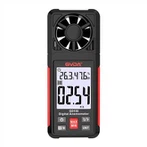How to measure a 400-microfarad capacitor with a pointer multimeter?
First, use a metal object to short - circuit the capacitor pins for discharging. The main purpose of this is to eliminate potential dangers and reduce measurement errors. Some charged capacitors can be very dangerous when discharging. They can not only damage the multimeter but also potentially harm people. Even if there is only a small amount of charge that the human body can't sense, it can still affect the measurement results.
After discharging, you can safely measure the capacitor. The first step in measurement is to select the appropriate range on the multimeter. The principle for range selection is that the maximum swing of the pointer during measurement should be around the middle of the dial. When using an MF47 multimeter to measure a 400μF capacitor, it is generally advisable to select the Rx10 range.
When a capacitor is connected to direct current, a charging current is generated at the moment of connection. The larger the capacitance, the larger the current. If you use the Ω range of a pointer multimeter to measure a capacitor, it is equivalent to using the battery inside the multimeter to charge the capacitor. The larger the capacitance, the greater the swing of the pointer.
But how much should the pointer swing for a 400μF capacitor? You need to find a new capacitor with a similar capacitance for comparison. Here, we can choose a 470μF capacitor as a reference. There may be some differences for different models of multimeters, but as long as the pointer swings to the middle for easy comparison, it's okay. Based on this principle, some multimeters even have capacitor scales, allowing for direct measurement.
Another thing to note is that electrolytic capacitors are polarized. The leakage current will be different when measured in the forward and reverse directions. When the red test lead is connected to the negative pole of the capacitor, the leakage current is smaller; when connected in the opposite way, the leakage current is larger. The closer the pointer returns to the original position after swinging, the smaller the leakage current. When simply measuring the leakage current, you can also select the Rx1K range for a more detailed view. When the red test lead is connected to the negative pole, the resistance should be no less than 1MΩ. The higher the withstand voltage, the smaller the leakage current (the larger the resistance).
In addition, you need to discharge the capacitor after each measurement; otherwise, it will seriously affect the measurement accuracy.
Set the multimeter to the 100Ω range (resistance range), short - circuit the two test leads and adjust the zero point. Place the two test leads on the two pins of the capacitor respectively. If the black test lead is placed on the positive pole of the capacitor and the red test lead is placed on the negative pole, it is called forward - charging measurement; otherwise, it is reverse measurement. During forward measurement, the pointer swings greatly, almost to zero; during reverse measurement, the pointer swing is relatively small.
Regarding the method for measuring the quality of a capacitor, whether it is forward or reverse measurement, if the pointer swings greatly, almost to the zero position, and then slowly swings back to almost infinity, it indicates that the capacitor is in good condition. If the pointer directly reaches the zero position and does not return, it means the capacitor is short - circuited and damaged. If the pointer stops at any position in the middle and does not return, it means the capacitor has serious leakage and cannot be used. If the pointer does not move at all, it means the capacitor has lost its capacitance and cannot be used. This is the method for measuring the quality of a capacitor, and the measurement of other capacitances is similar.






